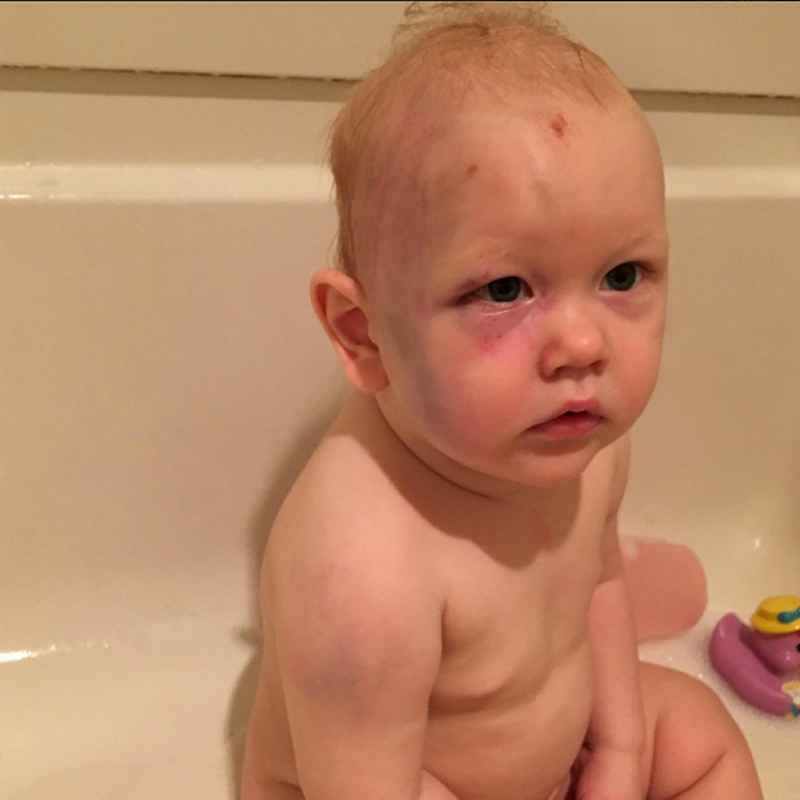Graphic photos of a bruised and battered toddler have gone viral after an outraged father posted them on Facebook, seeking justice.
In his call-to-action post, Joshua Marbury explained that his 1-year-old son, Jacob, was brutally attacked by a babysitter back in March. Marbury and the child’s mother, Alicia Quinney, had returned home from a date night to find the babysitter — a family friend — asleep on the couch and their son crying in his crib.
It wasn’t until the following morning that the couple saw why their son had been so upset.
“The first thing I saw was a black eye,” Quinney told Oregon Live. “I thought maybe marker got on his face or something. When he turned over, his whole right side of his face — black and blue.”
There were actually more marks on Jacob’s back arm and right ear, she said, which aren’t visible in these two photos. A detective told the parents the attack could have been fatal.
As it turns out, photo evidence (and even a confession by the alleged attacker, according to Marbury) aren’t enough to press charges in Oregon because of one shocking reason: the tot can’t talk. This injustice is the result of a 2012 ruling that says the victim must be able to describe the pain suffered.
“After TWO months of waiting we only find out that charges are dropped BECAUSE my one year old cannot tell you verbally he was abused and my son did not show he was in pain OR that this person ‘intentionally’ did this,” Marbury wrote in the post accompanying the disturbing photos of Jacob’s injuries.
According to Oregon Live, in order to convict a suspected child abuser of felony assault or criminal mistreatment, prosecutors must prove the victim suffered a “physical injury” under Oregon law. This also means proving the person experienced “substantial pain.” Unfortunately, the appeals court has made this a difficult task unless victims can talk about how they suffered — meaning young children, kids with autism and other developmental disabilities and older children who don’t want to speak out against abusers are out of luck. Proving “physical injury” can be tricky, too. This is because the appeals court has ruled that bruises, shallow cuts and welts aren’t enough to show a victim suffered an “impairment of physical condition.”
Marbury’s Facebook post of his son’s injuries has been shared more than 364,000 times so far. Hopefully, this awareness helps bring about change to the system to ensure that Oregon children are protected from abuse — and that abusers pay for their cries. As Marbury wrote, “NOBODY can just hit a child and more to just get away with it because the child cant verbally tell you.”
You can view the Facebook post here:
